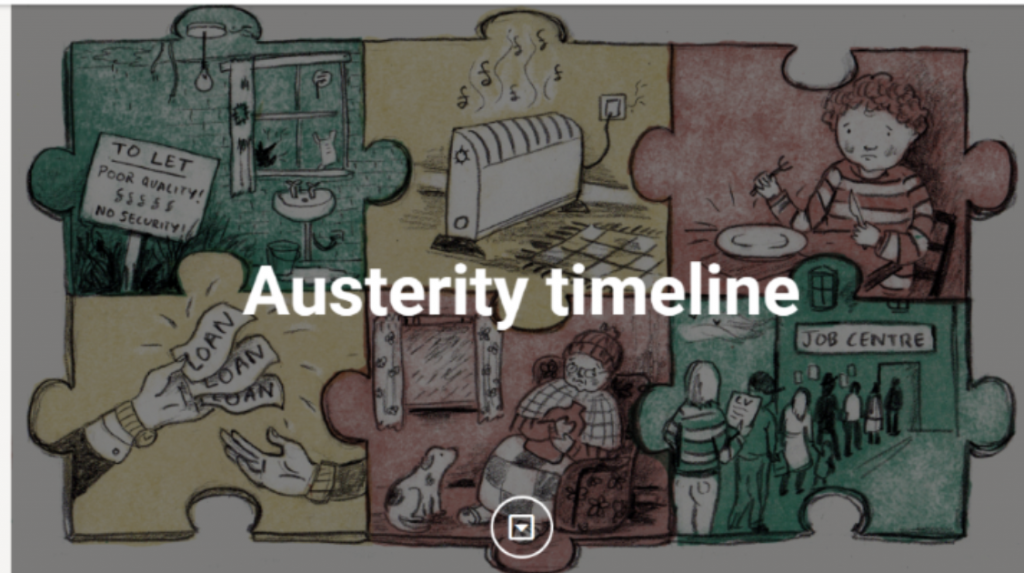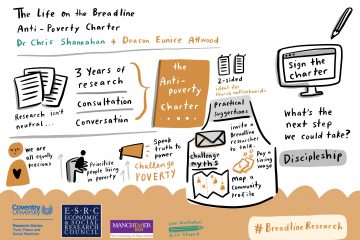This week we launched a new Life on the Breadline project resource – an illustrated austerity timeline. The timeline has been developed by project Research Fellow, Stephanie Denning, with input from participants at the National Poverty Consultation with Church Action on Poverty in November 2018.

The illustrations used on the timeline are by artist, Beth Waters.

In 2008 there was a global financial crisis and countries around the world entered recession. In the UK, the recession lasted for six quarters in a row. In October 2009, the UK government began austerity policies. Austerity is an economic policy to reduce government debt by reducing government spending. However, austerity is not just an economic policy – austerity affects people’s daily lives. Now ten years later, there are debates over whether austerity is ending as the effects of austerity continue to be felt.
Taking each year in turn from 2009 to 2019, the austerity timeline summarises some of the key UK austerity policies in the last decade, and begins to show the effects of austerity in people’s daily lives. This is not intended to be an exhaustive list, but rather shows some of the key policies and moments in the last ten years. The timeline will continue to evolve in the coming years. A question remains: how will austerity evolve in the future?


